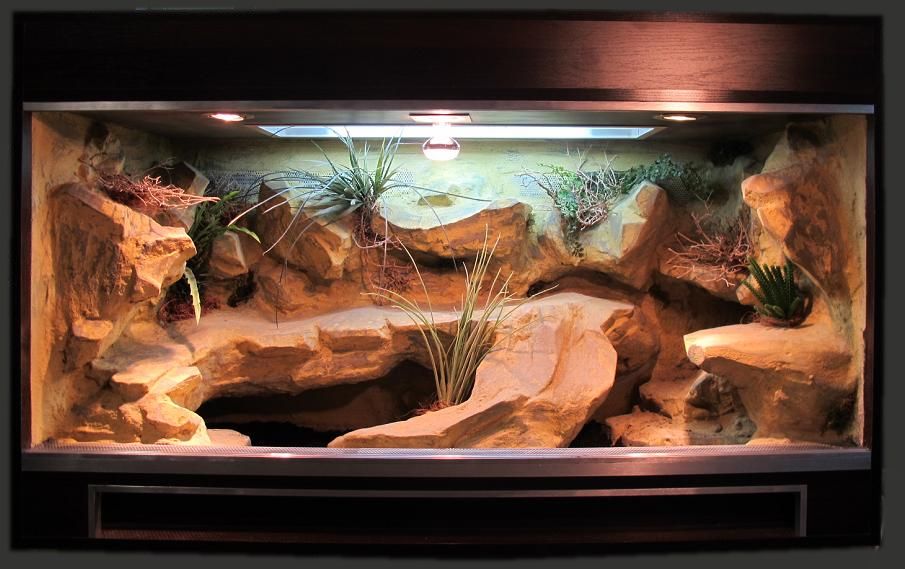Welcome to the ultimate guide on gecko tank decor! As a passionate reptile owner and enthusiast, I can tell you that setting up your gecko’s habitat is an exciting journey. Not only does it make the tank visually appealing, but it also plays a crucial role in your gecko’s well-being. This article is designed to provide you with all the necessary information to create a stimulating environment for your scaly friend.
Understanding Your Gecko’s Needs
Before we dive into the various decor options, it’s essential to understand what your gecko needs for a healthy and happy life. Different species, whether it’s a leopard gecko, crested gecko, or others, have specific requirements.
Habitat Considerations
- Temperature: Different species require different temperature ranges. For example, leopard geckos thrive in a warm environment with a basking spot around 88-92°F.
- Humidity: Humidity levels vary by species. Crested geckos, for example, prefer higher humidity levels around 60-80%.
- Space: Provide ample space for climbing, hiding, and exploring. A 20-gallon tank is a good starting point for most gecko species.
Types of Gecko Tank Decor

1. Substrate Options
The substrate is the foundation of your gecko’s habitat. It not only affects the aesthetic but also the health of your pet.
| Substrate Type | Pros | Cons |
|---|---|---|
| Reptile Carpet | – Easy to clean – Non-ingestible |
– May need frequent replacement |
| Paper Towels | – Inexpensive – Easy to replace |
– Not visually appealing |
| Sand | – Natural appearance – Good for digging |
– Risk of impaction if ingested |
2. Hiding Spots
Geckos are naturally secretive and love to hide, so providing several hiding spots is essential. Here’s what you can consider:
- Caves: Fake rock caves or natural-looking caves can serve as excellent hiding spots.
- Plants: Live or artificial plants not only provide additional cover but also enhance the tank’s look.
- Hollow Logs: A hollow log can create a cozy space for your gecko to retreat.

3. Climbing Structures
Climbing is a natural behavior for many gecko species. Incorporating climbing structures can enhance your gecko’s environment.
Recommended Climbing Decor
- Branches: Curved branches offer excellent climbing opportunities.
- Vines: Hanging vines can create a jungle atmosphere.
- Rocks: Stacked rocks can provide a multi-leveled climbing area.

4. Water and Food Dishes
Choosing the right dishes is critical for your gecko’s hydration and nutrition.
What to Look For
- Shallow Dishes: Use shallow, wide dishes to prevent drowning.
- Non-Tip Dishes: Ensure that the dishes are stable to avoid spills.

Decorating Styles for Gecko Tanks
Now that we’ve covered the essentials, let’s dive into various decorating styles you can implement in your gecko tank. Choosing a theme can add character to your pet’s abode!

1. Naturalistic Theme
This style mimics a gecko’s natural environment. Incorporate natural elements like:
- Real or artificial plants
- Rock formations
- Natural-looking substrates

2. Jungle Vibe
For a more vibrant atmosphere, consider creating a jungle vibe with:
- Colorful artificial plants
- Hanging vines
- Brightly colored decorations
3. Desert Escape
If you own a desert-dwelling gecko like a leopard, a desert environment might be the best fit:
- Sand or desert soil substrates
- Branched cacti and rock formations
- Minimal vegetation
Cost Considerations for Gecko Tank Decor
Setting up a beautiful tank can range significantly in cost based on materials and complexity. Here’s a rough comparison:
| Decor Item | Low-End Cost | High-End Cost |
|---|---|---|
| Substrate | $10 | $50 |
| Hiding Spots | $5 | $70 |
| Climbing Structures | $10 | $100+ |
Maintaining Tank Decor
Setting up your gecko’s tank is just the beginning! Maintenance is key to ensuring a healthy habitat.
Regular Cleaning
Establish a cleaning schedule to keep the tank hygienic. This could include:
- Spot cleaning waste daily
- Changing substrate every 1-3 months
- Cleaning decorations and dishes weekly
Monitor Decor for Wear and Tear
Check for any signs of damage or wear. Items like climbing structures may need replacement over time, while plants may require pruning or replacement.
Final Thoughts: Making the Right Choices
Decorating your gecko’s tank can be a fun and rewarding experience. The right decor not only beautifies the habitat but also enriches your gecko’s life. With the tips and ideas presented in this guide, you can create a vibrant, safe, and stimulating environment for your scaly companion.
FAQs About Gecko Tank Decor
1. What is the best substrate for geckos?
The best substrate varies by species. For leopard geckos, reptile carpet or paper towels are recommended, while crested geckos thrive in coconut fibers or eco-earth.
2. How many hiding spots does a gecko need?
Generally, one hiding spot per gecko is ideal. More is better to give them options and reduce stress.
3. Are live plants safe for geckos?
Yes, many gecko owners use live plants as they provide humidity and aesthetics. Just ensure the plants are non-toxic and safe for your specific gecko species.
4. How often should I clean the gecko tank decor?
Spot clean daily, with a thorough cleaning of decorations and substrate every 1-3 months, depending on the type of substrate used.
5. Can I use rocks and branches from outside in my tank?
While it’s possible, it’s safer to use store-bought decorations to avoid potential pesticides, parasites, or disease.
Conclusion
With the right decorations and care, your gecko can thrive in an environment that mimics its natural habitat. Use this guide as a resource when setting up or upgrading your tank decor. Enjoy the process of creating a beautiful and enriching home for your gecko, and watch as it flourishes in its new surroundings!